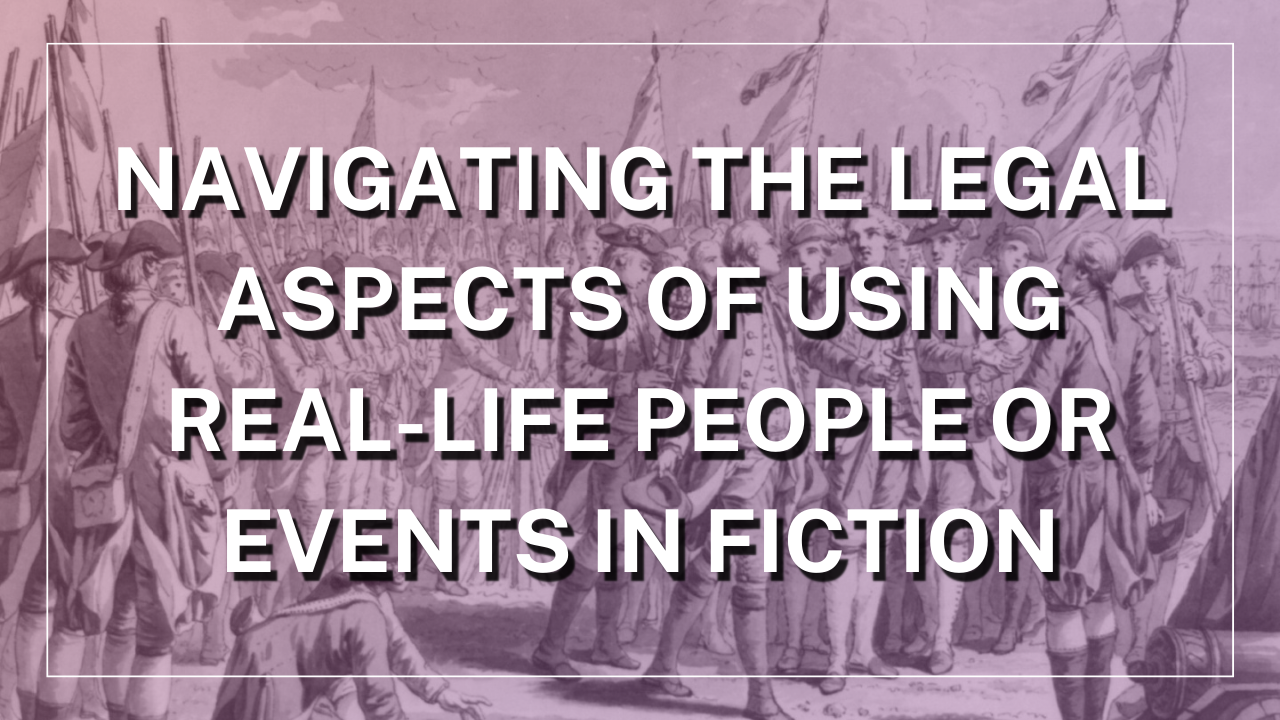Using real-life people or events in fiction can add depth and realism to your storytelling. However, it’s essential to navigate the legal aspects carefully to avoid potential legal issues. In this blog, we will discuss five ways to navigate the legal landscape when incorporating real-life people or events into your fiction.
1. Understand the Laws of Defamation:
Defamation is a legal issue that arises when a person’s reputation is harmed by false statements. When including real-life people in your fiction, it’s crucial to understand the laws of defamation in your jurisdiction. Be cautious about making false and damaging statements about individuals, as it can lead to legal consequences. To mitigate the risk, consider altering identifying characteristics or blending multiple individuals to create composite characters that cannot be directly linked to any specific person.
2. Seek Permission or Consent:
When incorporating real-life people or events into your fiction, consider seeking permission or obtaining consent, especially if you are portraying them in a recognizable and potentially negative or sensitive light. While it may not always be feasible to contact every individual, reaching out to the relevant parties, such as living individuals portrayed prominently, can help avoid potential legal disputes. If you receive consent, it’s advisable to document it in writing to protect yourself legally.
3. Employ the Doctrine of Fair Use:
The doctrine of fair use allows limited use of copyrighted material without permission from the copyright holder. However, the application of fair use can be complex and varies by jurisdiction. When incorporating real-life events or copyrighted material, analyze whether your use qualifies as fair use. Factors such as the purpose and character of your use, the nature of the copyrighted work, the amount used, and the potential impact on the market for the original work should be considered. Consult a legal professional to determine if your use falls within the fair use guidelines.
4. Use Fictionalization and Creative Transformation:
To avoid potential legal issues, consider fictionalizing or creatively transforming real-life events or individuals. By changing names, locations, physical appearances, and other identifying details, you create a fictionalized version that is distinct from the actual people or events. This approach adds a layer of protection, as it becomes more challenging for individuals to claim direct representation and for courts to establish a basis for infringement or invasion of privacy.
5. Consult with a Legal Professional:
When in doubt about the legal aspects of using real-life people or events in your fiction, consult with a legal professional specializing in intellectual property or entertainment law. They can provide valuable guidance tailored to your specific situation and jurisdiction. An attorney experienced in these matters can help you understand the legal risks, navigate the complexities of copyright and defamation laws, and ensure that your work complies with relevant legal standards.
Incorporating real-life people or events into your fiction can be an exciting and enriching experience. However, it’s essential to navigate the legal aspects carefully to avoid potential legal disputes. Follow these key steps to ensure that your work adheres to legal standards while still capturing the essence of real-life elements. By proactively addressing the legal aspects, you can focus on creating compelling and impactful fiction while minimizing legal risks.

